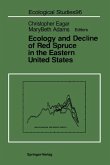"Conservation landscaping" refers to landscaping with speci¿c goals of reducing pollution and improving the local environment. In the Chesapeake Bay watershed (the land that drains to the Bay and its many tributaries), this style of landscaping is sometimes called "BayScaping," or bene¿cial landscaping. Conservation landscaping provides habitat for local and migratory animals, conserves native plants and improves water quality. Landowners also bene¿t as this type of landscaping reduces the time and expense of mowing, watering, fertilizing and treating lawn and garden areas, and offers greater visual interest than lawn. Bene¿cial landscaping can also be used to address areas with problems such as erosion, poor soils, steep slopes, or poor drainage. One of the simplest ways to begin is by replacing lawn areas with locally native trees, shrubs and perennial plants. The structure, leaves, ¿owers, seeds, berries and other fruits of these plants provide food and shelter for a variety of birds and other wildlife. The roots of these larger plants are also deeper than that of typical lawn grass, and so they are better at holding soil and capturing rainwater.
Hinweis: Dieser Artikel kann nur an eine deutsche Lieferadresse ausgeliefert werden.
Hinweis: Dieser Artikel kann nur an eine deutsche Lieferadresse ausgeliefert werden.







